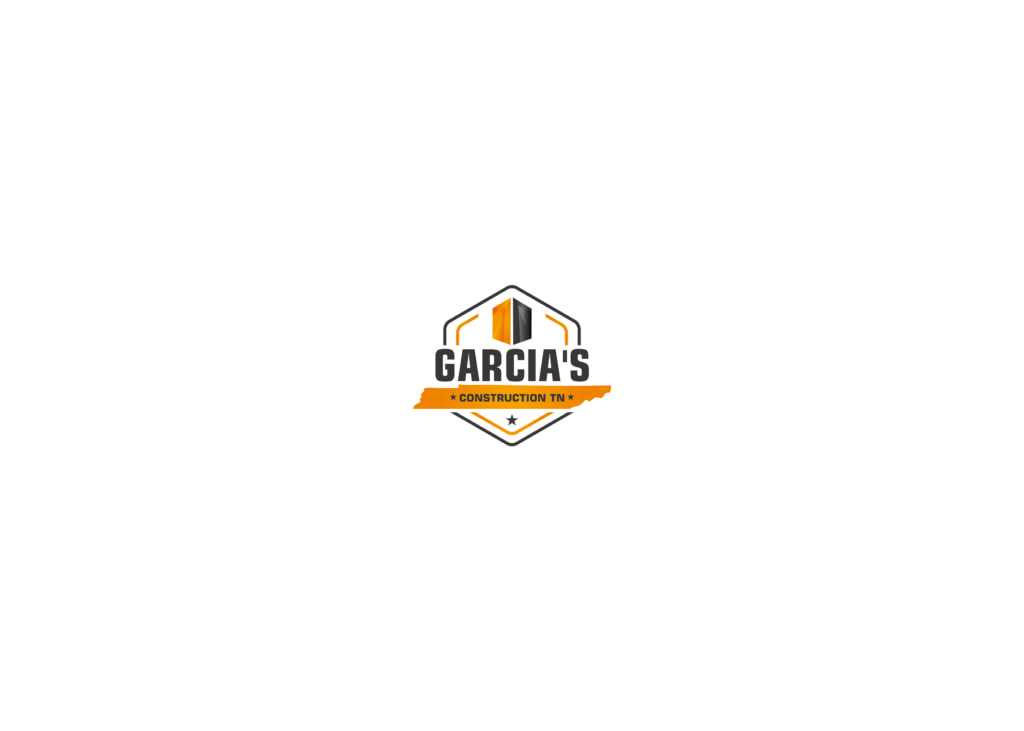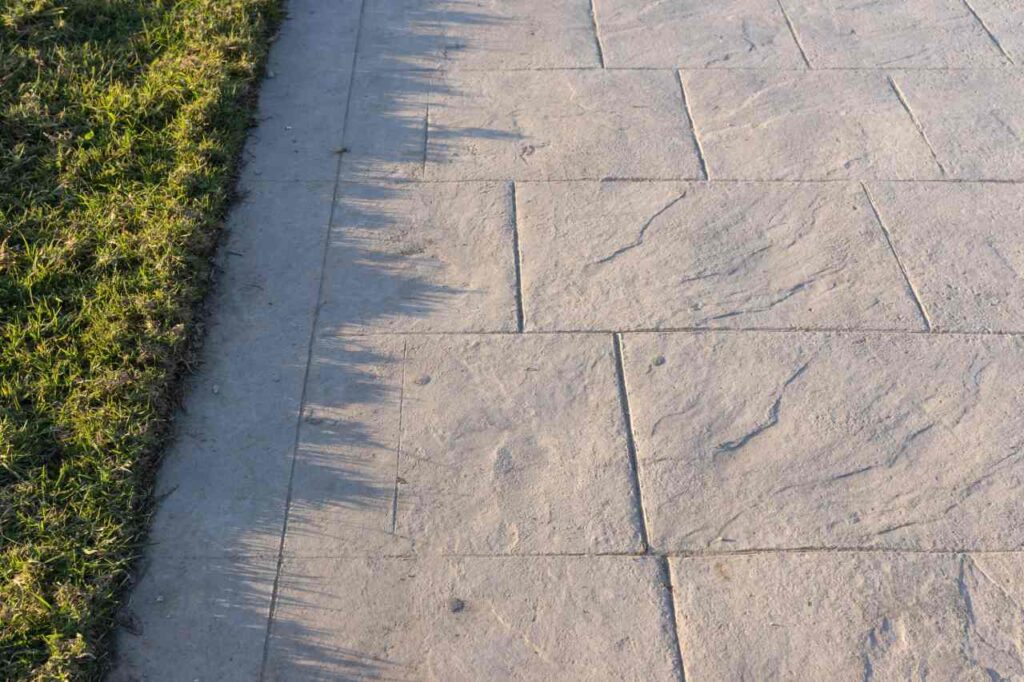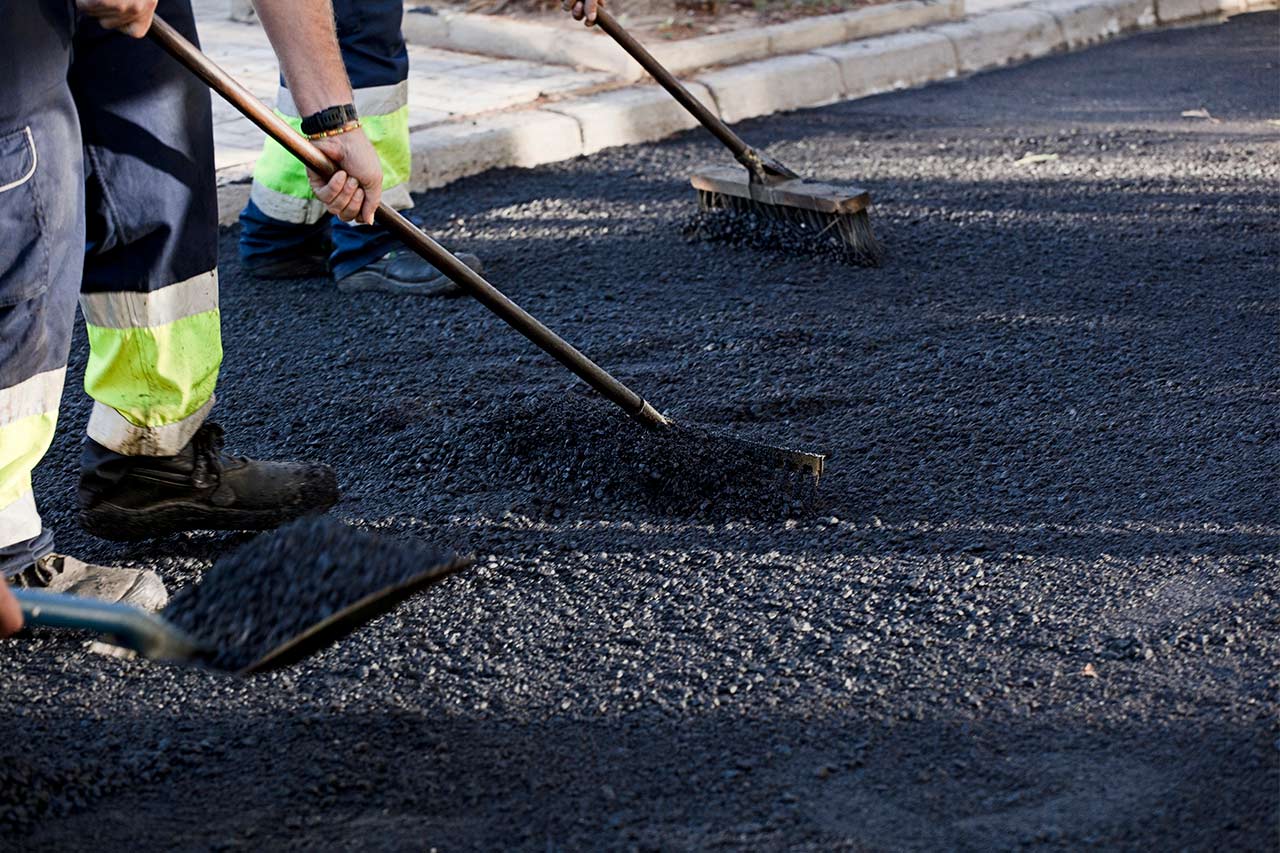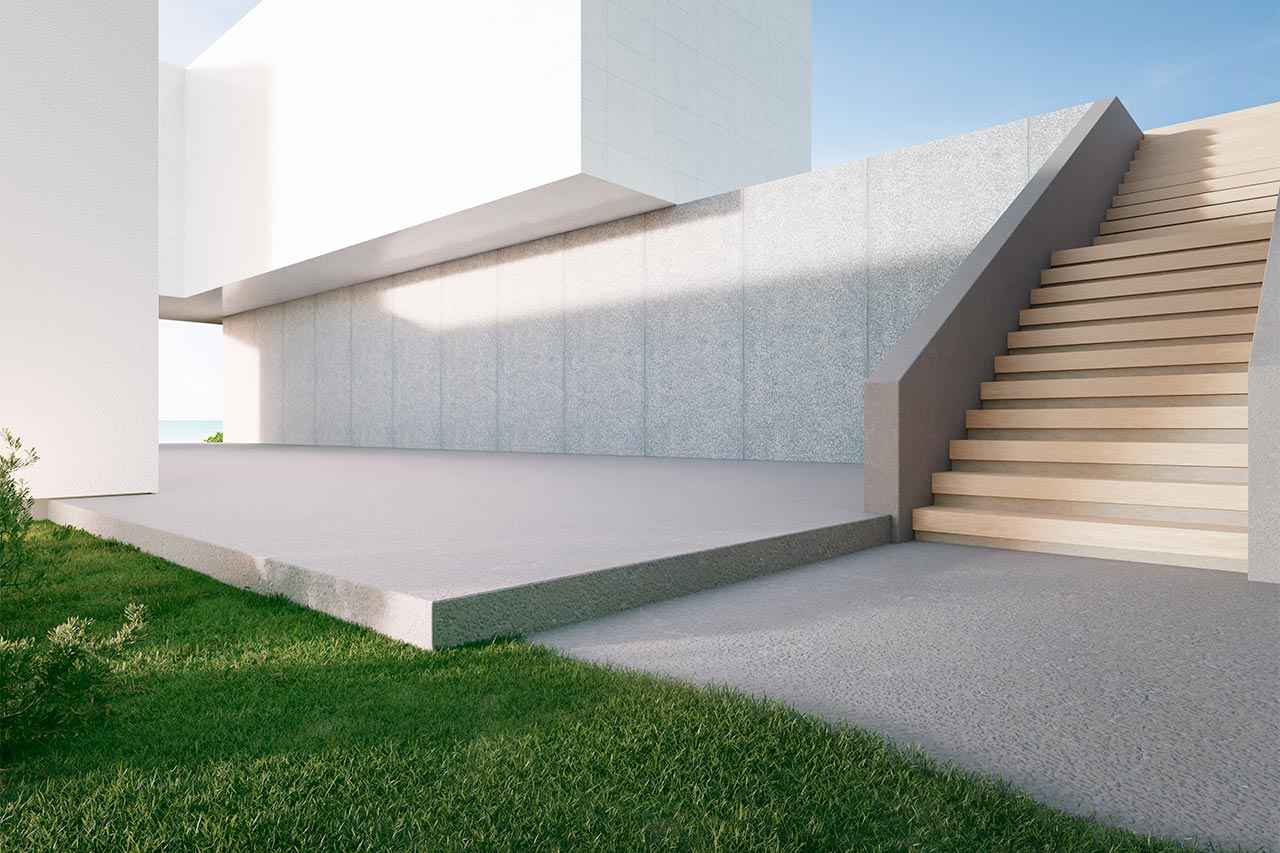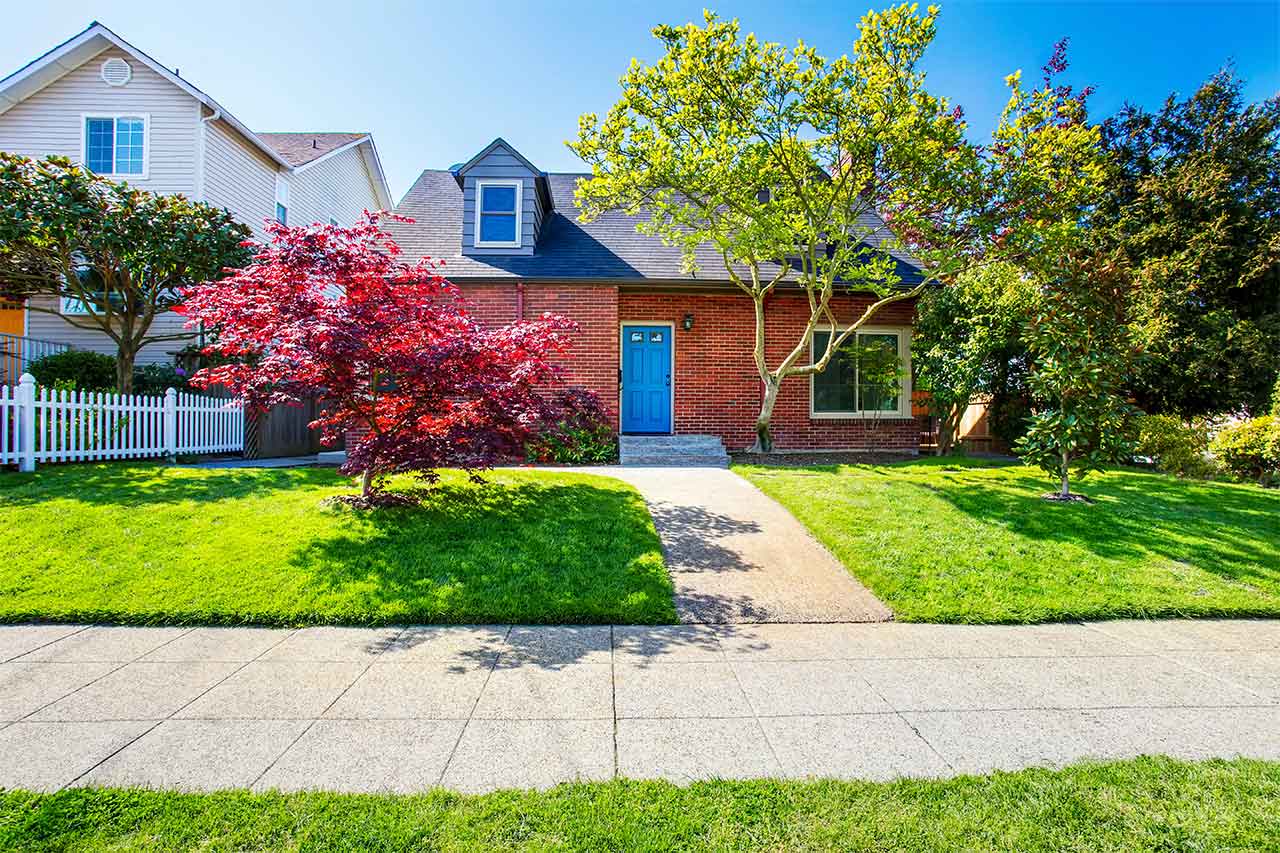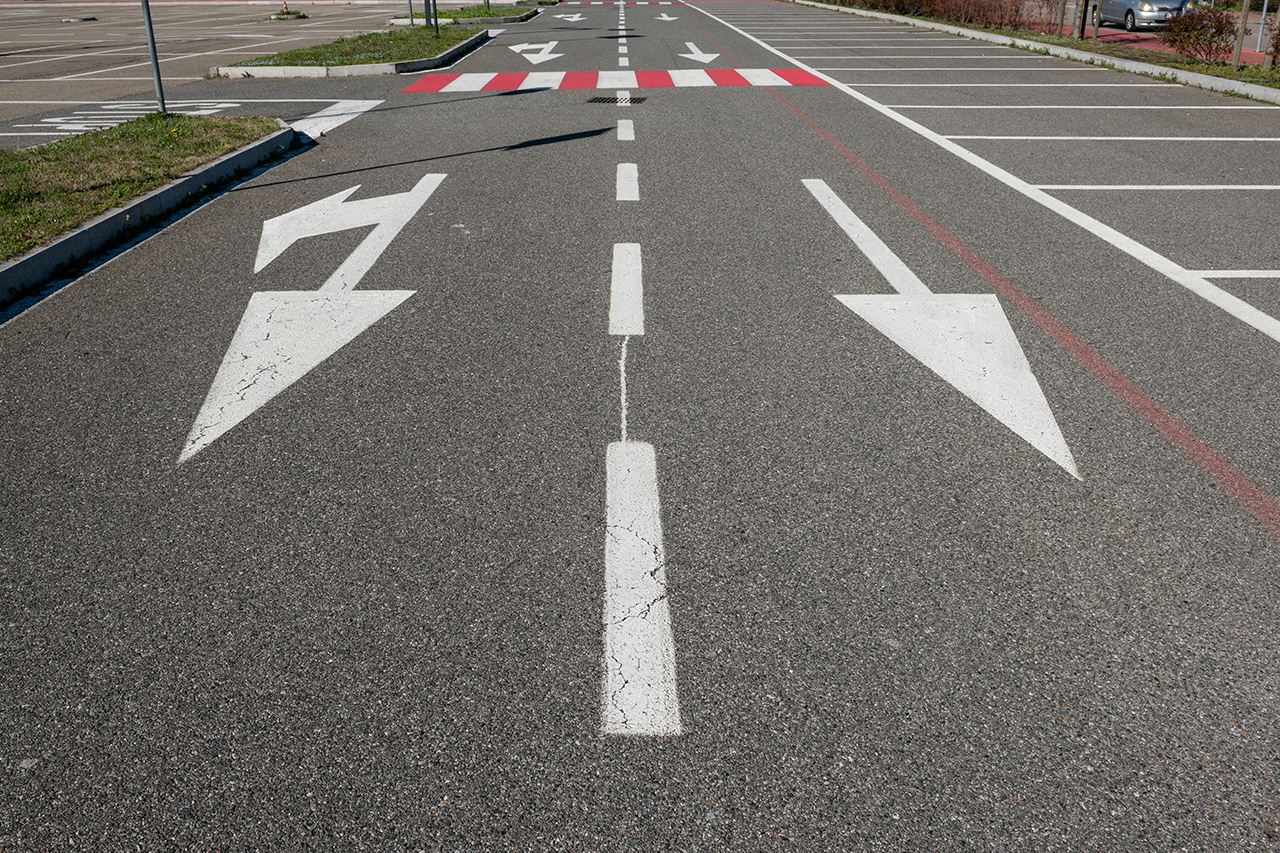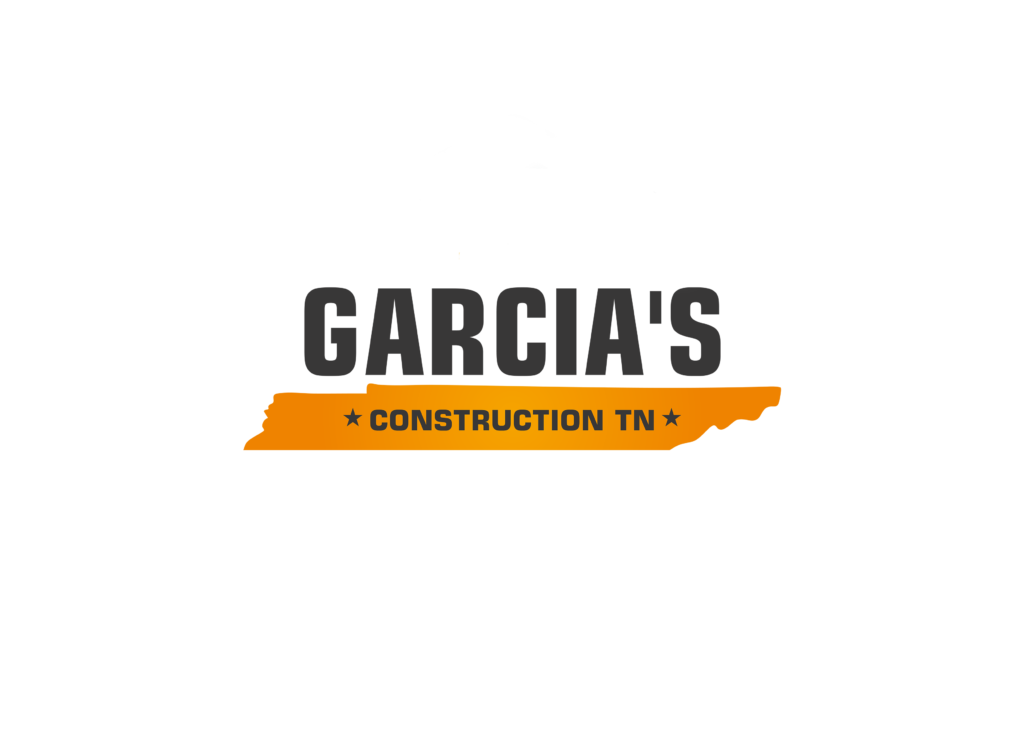Homeowners, designers, custom home builders, and commercial contractors are now turning to decorative concrete as an easy, affordable, and creative way to beautify both interiors and exteriors. Today, trends in decorative concrete include stained, stamped, polished, and other decorative concrete finishes that create a fresh, modern, and updated look on patios, pool decks, countertops, fire pits, outdoor kitchens, garage floors, office floors, showrooms, and more.
Decorative concrete finishes can transform boring gray concrete into expensive-looking finishes that mimic sleek slate, warm blues, natural stone, wood, and other sophisticated textures—without the high cost.
Here we’ll tell you about some of the most popular types of decorative concrete finishes to determine which one best suits your personal taste and style.
Stamped Concrete
Stamping is a decorative finish designed to mimic stone, slate, tile, brick, pavers, and even wood. Creative and affordable, stamped or textured concrete provides great versatility when it comes to mixing patterns and colors.
Some homeowners choose to stamp the entire concrete slab, while others choose a more subtle look by adding a stamped border. When combined with stained concrete, these designs stand out and give the concrete a professional, striking look.
Stamped Concrete
As a decorative surface finish, there are no limitations to stenciled concrete designs. Stencil application is a snap for DIYers, and professionals can offer custom designs, making it a great alternative to the multiple faces of concrete.
With stamped concrete, you can create virtually any pattern—it will be your personal style. While there are many different stencils you can purchase, you can also create your own. All it takes is a little creativity and some effort to achieve a beautiful end result.
Concrete Color
Color may be the most distinctive feature of decorative concrete, and there are a multitude of color applications. With the exception of all-over color, most concrete coloring methods can be applied to existing concrete. Concrete coloring methods include:
• Integral Color, applied when wet, achieves a deep color throughout the depth of the concrete slab.
• Stain gives a rich, deep color to concrete. Concrete stain comes in two types: acid-based chemical stains and water-based acrylic stains. Stain is a great way to breathe new life into old concrete.
• Concrete stain is a time-saving color enhancer that is ideal for vertical and surface applications such as stencil printing.
• Hardeners are commonly used in industrial flooring applications because of their durability.
Remember that you can also use concrete paint over existing slabs to add color and life to an otherwise dull, drab patio or sidewalk.
